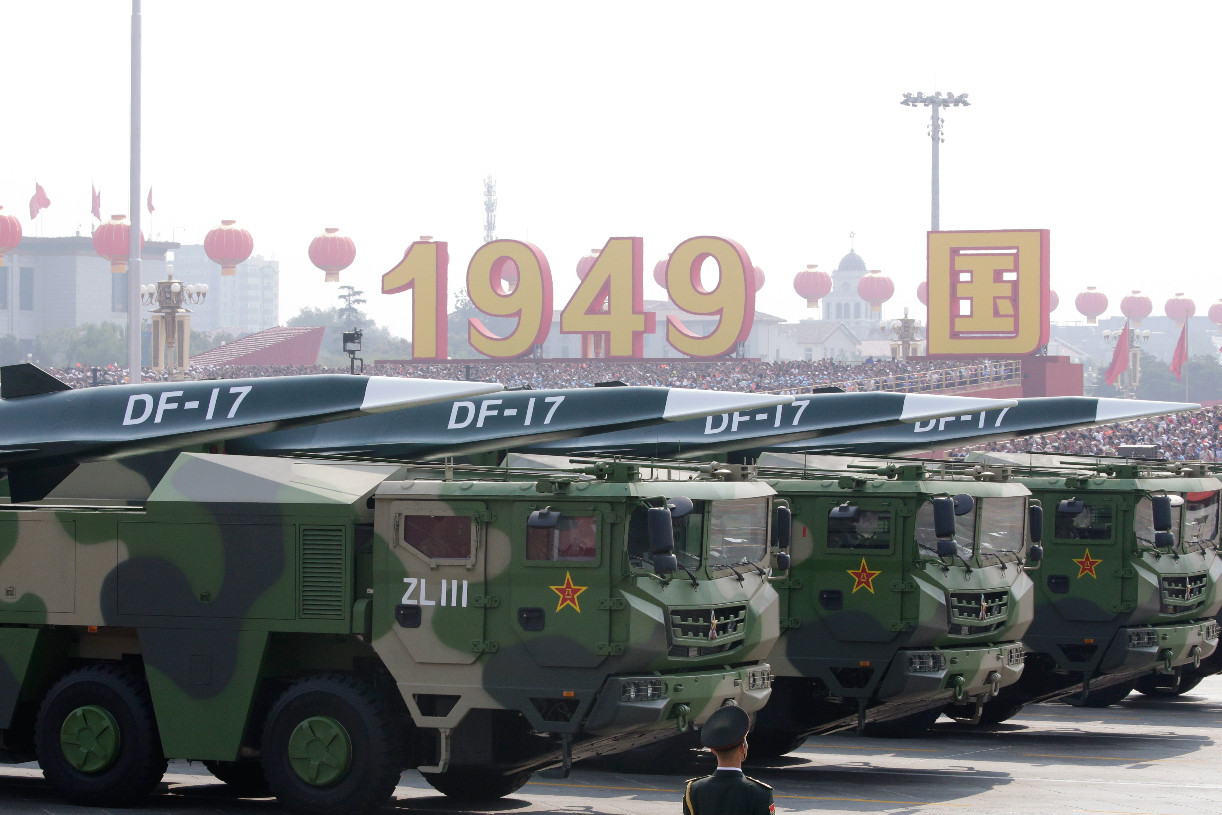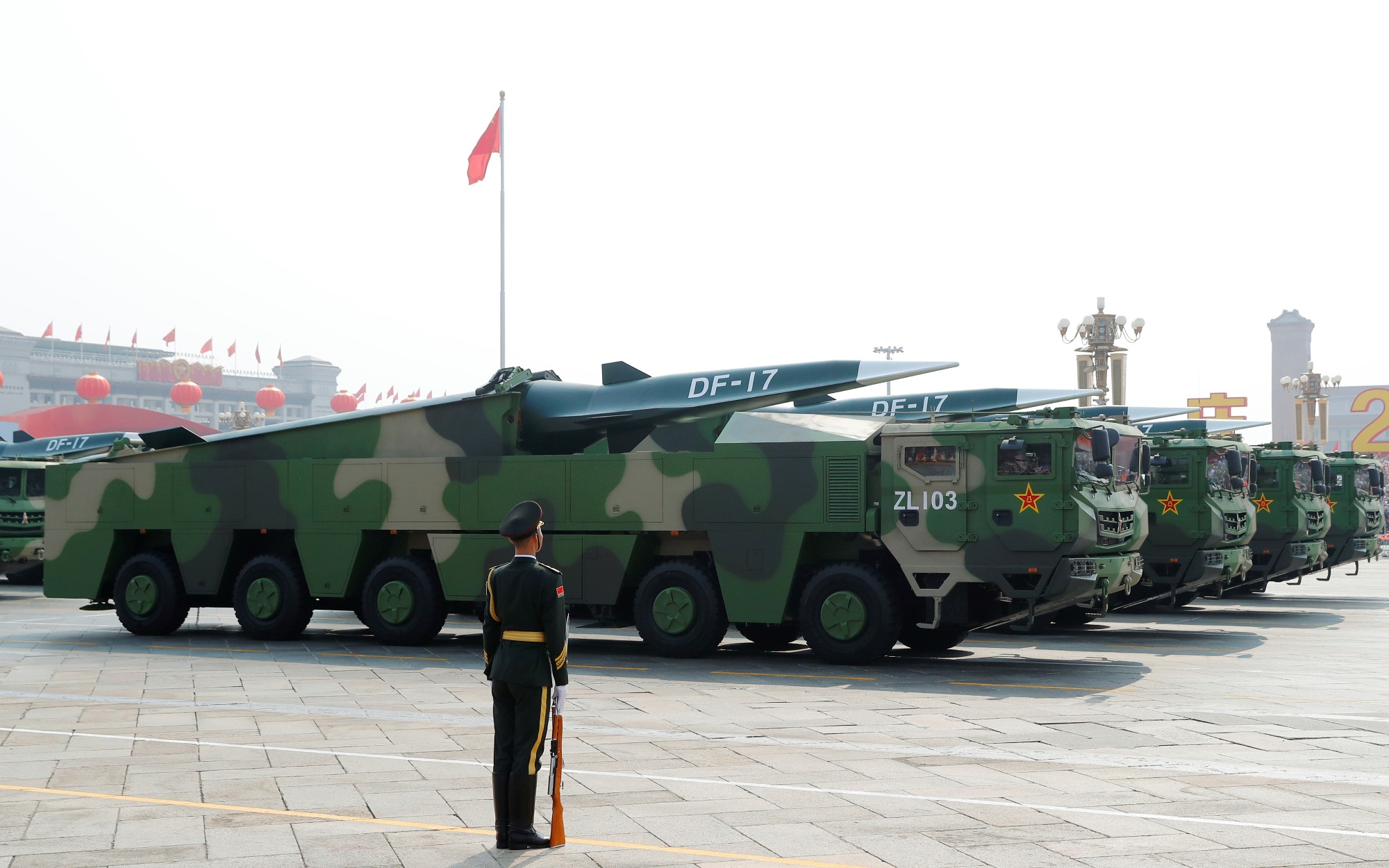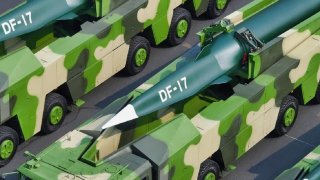China’s DF-17 Hypersonic Missile Gives the U.S. Military Nightmares
China’s DF-17 missile, equipped with a hypersonic glide vehicle, represents a significant challenge to U.S. military dominance in the Indo-Pacific. Capable of evading traditional defense systems, this weapon extends China's anti-access/area-denial (A2/AD) capabilities, making U.S. military operations near Chinese shores increasingly difficult.
Summary and Key Points: China’s DF-17 missile, equipped with a hypersonic glide vehicle, represents a significant challenge to U.S. military dominance in the Indo-Pacific.

-Capable of evading traditional defense systems, this weapon extends China's anti-access/area-denial (A2/AD) capabilities, making U.S. military operations near Chinese shores increasingly difficult.
-The DF-17's range and maneuverability threaten U.S. carriers and bases, complicating power projection in the region.
The DF-17 Missile Threat from China
As the U.S. grapples with developing countermeasures, the DF-17 underscores the shifting balance of power in favor of China.
China has developed a comprehensive ability to defeat the United States military in combat. No, it’s not some new warship or airplane. It’s both simple and unconventional. Beijing has determined that the Americans cannot be beaten by matching them bullet-for-bullet.
Instead, China’s military has accurately assessed that any war with the United States will be fought close to China’s shores, giving China what amounts to a homefield advantage. While the Americans must come from distant lands.
Therefore, if China can deny the Americans the ability to reliably project power into China’s backyard, then Beijing’s forces can defeat the Americans—and enjoy free reign over their part of the Indo-Pacific.
Chinese A2/AD Beats U.S. Military
As I have detailed in previous reports for this site, the Chinese have built a long-range, comprehensive anti-access/area-denial (A2/AD) capability that can prevent the deployment of most US military platforms in the event of a geopolitical crisis between the two great powers. Meanwhile, China has the capability, with these missiles, to target US military bases in the Indo-Pacific.
What’s more, the Chinese have created so many of these relatively cheap missiles, drones, and hypersonic weapons that the Chinese can easily pop these weapons off at will—and have enough spares on hand to delay US power projection long enough for them to wrest control over the South China Sea, or the Senkaku Islands, or even, God forbid, Taiwan itself.
Understanding the DF-17
One such system is the Dong Feng-17 (DF-17) Medium-Range Ballistic Missile (MRBM). It comes equipped with a Hypersonic Glide Vehicle (HGV), which can fly at speeds above Mach Five and radically maneuver while in flight, making defending against this weapon with traditional anti-missile defense systems difficult, if not impossible. The DF-17 was first introduced to the public during China’s National Day military parade in October 2019, after it had reportedly been in development since 2014.
The DF-ZF, or the designation for the DF-17 HGV, is launched atop a ballistic missile, providing the initial boost to high altitudes before releasing the aforementioned HGV. The DF-ZF glides back to the Earth at hypersonic speeds, radically altering its course to avoid anti-missile defenses.
The range of this beast is around 1,118 to 1,553 miles, meaning that no US aircraft carrier will be able to get within range of wherever a war between China and the United States erupts. Indeed, these A2/AD systems complicate the ability of any US Navy surface warship to safely and effectively operate near these Chinese systems.
Let us not forget, too, that the DF-17 is meant to be used primarily for conventional strikes.
A Nuclear Threat to America’s Carriers?
Although, it can be equipped with a nuclear warhead as well, according to Army Recognition. The Chinese military has already stated its intention to sink up to three US Navy aircraft carriers in the event of a war between the United States and China. Our elite laugh out loud at those claims, confusing the Chinese military of today with the Chinese military of thirty years ago.
But Washington should wake up to the fact that it isn’t 1994 anymore.
The unipolar moment is long over. And the United States is a drastically declining power (thanks to the current crop of leaders who’ve failed the country on every level) whereas the Chinese, whatever the future may hold, are for now a rising power with the ability to dominate their near-abroad at the expense of the United States. The DF-17 is one such example of how the Chinese have completely done an end-run around America’s perceived strategic advantages—notably at sea.
The DF-17 can be used in a variety of missions, from precision strikes against high-value targets to strategic deterrence. The missile’s ability to evade current defense systems, such as the much-ballyhooed Terminal High Altitude Area Defense (THAAD), if any are even available since so many of these systems have been deployed to Ukraine, and Patriot systems (again if any are available for the Indo-Pacific, considering how many have been sent to the Mideast and Ukraine), makes the DF-17 a true challenge to the US military.
DF-17: Washington’s Nightmare Fuel
Washington is closely monitoring the development of the DF-17 and other hypersonic weapons. Further, the US is struggling to create both its hypersonic capabilities as well as its defenses against Chinese (and Russian) hypersonic weapons, such as the DF-17.
More generally, until the Pentagon can reliably overcome the Chinese A2/AD threat, which they currently cannot, the US military will be defeated by China in any fight over Taiwan.

And that fight is coming much sooner than most people realize.
Author Experience and Expertise: Brandon J. Weichert
Brandon J. Weichert, a National Interest national security analyst, is a former Congressional staffer and geopolitical analyst who is a contributor at The Washington Times, the Asia Times, and The-Pipeline. He is the author of Winning Space: How America Remains a Superpower, Biohacked: China’s Race to Control Life, and The Shadow War: Iran’s Quest for Supremacy. His next book, A Disaster of Our Own Making: How the West Lost Ukraine, is due October 22 from Encounter Books. Weichert can be followed via Twitter @WeTheBrandon.
All images are Creative Commons or Shutterstock. All photos are of various submarine styles.
From the Vault
Russia Freaked Out: Why the U.S. Navy 'Unretired' the Iowa-Class Battleships
Battleship vs. Battlecruiser: Iowa-Class vs. Russia's Kirov-Class (Who Wins?)
Image Credit: Creative Commons and/or Shutterstock.


